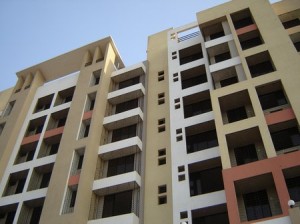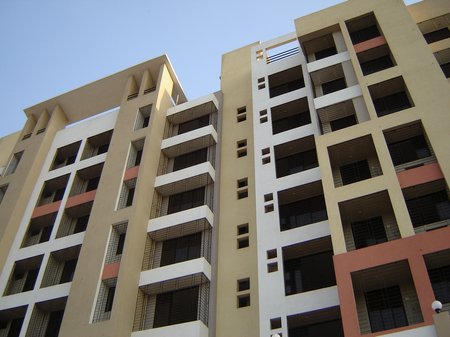 Track2Realty: The total new housing demand will be nearly 12 million units in the next five years (2013- 17), according to a report by Cushman & Wakefield (C&W). This is based on the estimated growth of population across India and in major cities. Of the pan India additional demand, the top 8 cities will constitute approximately 23%.
Track2Realty: The total new housing demand will be nearly 12 million units in the next five years (2013- 17), according to a report by Cushman & Wakefield (C&W). This is based on the estimated growth of population across India and in major cities. Of the pan India additional demand, the top 8 cities will constitute approximately 23%.
Of the total demand in top eight cities, Middle Income Group (MIG) and Higher Income Group (HIG) categories constitute majority of the demand at 2.5 million units. Demand for Lower Income Group (LIG) will be relegated to a mere 300,000 units in these 8 cities, due to increase in housing and income standards that are expected to be witnessed in these key economic centres of India.
The gap between cumulative supply and demand (in MIG and HIG categories), in the period of 2013 – 2017, is estimated to be approximately 45% in the top eight cities where demand is higher than supply.
Most cities are facing a short fall of supply especially in the mid end segments, leading the gap in demand and supply, as developers are less keen on smaller ticket prices on account of high land costs, surmounting construction costs and reduced profitability. Further, financing large scale projects are also becoming a challenge for developers as financial institutions are wary of lending to the real estate sector going by the directive from RBI and Securities and Exchange Board of India (SEBI).
Chennai is expected to see the highest demand – supply gap with supply falling short by over 80% of the expected demand, while Mumbai is expected to see the least imbalance in demand and supply with demand outstripping by only 5% albeit, most of the supply will be in the HIG category leaving MIG underserviced.
Sanjay Dutt, Executive Managing Director, South Asia, Cushman & Wakefield says, “The gap between fresh demand and supply is expected to see an incremental expansion as supply will fall short on account of economic, regulatory and political scenario. However, some of the demand in the next couple of years can be met through the existing vacant stock. Of the 11 mn units that the government estimates are currently not under use from their owners, in our opinion between 40% – 50 % can be considered for future usage and could service some of the new demand.”
“While demand for housing units will grow proportionate to the rise in population, supply is expected to be less aggressive in the short to medium term. New regulations like LARR Bill and Real Estate regulatory bill which are expected to come into force in the next few quarters will stagger supply. Additionally, there may also be a rise in construction cost which may affect pricing and therefore adversely affect end user demand. The key issue of financing real estate projects remain critical especially in the wake of recent announcements where apex bank RBI has been cynical of financial institutions lending upfront money to developers. As expected, the demand will be higher in MIG segment rather than in the HIG however, developers are unable to meet this demand due to aspects such as high land costs, development costs and escalating inflation which also affects the cost of construction,” Sanjay adds.
| CITY | DEMAND | SUPPLY | % Gap Between Supply & Demand |
||||
| TOTAL | MIG | HIG | TOTAL | MIG | HIG | ||
| Ahmedabad | 230,709 | 184,567 | 46,142 | 80,437 | 64,350 | 16,087 | 65 |
| Bengaluru | 412,820 | 309,615 | 103,205 | 197,184 | 147,888 | 49,296 | 52 |
| Chennai | 314,442 | 282,998 | 31,444 | 59,920 | 53,928 | 5,992 | 81 |
| Hyderabad | 261,883 | 170,224 | 91,659 | 84,269 | 54,775 | 29,494 | 68 |
| Kolkata | 93,306 | 74,645 | 18,661 | 66,592 | 53,274 | 13,318 | 29 |
| NCR | 777,917 | 544,542 | 233,375 | 606,274 | 424,392 | 181,882 | 22 |
| Pune | 179,018 | 116,362 | 62,656 | 52,932 | 34,406 | 18,526 | 70 |
| Mumbai | 225,351 | 157,746 | 67,605 | 214,194 | 149,936 | 64,258 | 5 |
| TOTAL | 2,495,446 | 1,840,699 | 654,747 | 1,361,802 | 982,949 | 378,853 | 45 |
Source: Cushman & Wakefield Research
The total supply of housing units in 2013 – 17 is expected to be 1.4 million units in the top 8 cities of which majority of approximately 1 million units will be in the MIG category and only approximately 400,000 units will be in the HIG category. Corroborative to the demand, NCR will also see the highest supply of nearly 600,000 units by 2017 majority of which will be in the MIG category. Pune is expected to see the least amount of supply of only 53,000 units of housing space in the period 2013 – 17.
A significant part of the upcoming supply is expected to be absorbed by investors, especially high growth markets of Mumbai and NCR. Due to this, projected end – user demand is expected to remain subserviced and significant proportion of the end users will be living in rented accommodations. These two markets constitute approximately 60% of the total estimated demand and approximately 40% of the total supply amongst the top eight cities.
NCR
NCR is expected to witness the highest demand across mid – ranged and high-end segments estimated to be 770,000 units during 2013 – 2017 while the expected cumulative supply in the same period for these segments is expected to be 600,000 (approx.). The gap is expected to be approximately 22% over the period . some of the expected demand in the 2013 -14 period is expected to be met through the unsold inventory currently existing in the suburban and peripheral locations.
The New Delhi Master Plan 2020, is expected to unlock 66,000 hectares of land within New Delhi which we expect would be largely cater to the residential sector. Thus new micro markets for residential development are expected to come up, it is yet to be seen in what proportion and configurations these units will be created.
Going by past trends, the growth of population of NCR has been steadily ahead of supply and this trend will continue as more and more immigrant population is expected to settle in the city. This additional supply may not affect the values of property in the city.
Mumbai
Mumbai is expected to witness additional demand of approximately 225,000 units for mid and high-end segment in the next 5 years while the supply in these categories will be nearly 214,000 units. Of the total demand in these two segments, majority will be seen in the mid-ranged housing which will remain underserviced. Overall though Mumbai is expected to see large supply in 2014 and 2015, most of the upcoming supply will be in the HIG category. The price points at which MIG projects have been launched are also higher than what end users of MIG would like to pay for.
Increasing input costs on one hand and sluggish sales on the other has forced developers to adopt alternate strategies to attract buyers. Some projects at planning stage have seen reduction in per unit size to lower the ticket price of the final product in order to augment sales. Others had resorted to offering attractive and innovative marketing schemes, yet due to sluggish economic sentiments and inflationary pressures on end users, actual demand has been lower than expected.
Kolkata
Kolkata is expected to witness a demand for around 93,000 units in the mid and high-end segment over the next 5 years. Due to a slow growth in services sector in the city, Kolkata is not witnessing an incremental influx of migrant population comprising of professionals, which is the primary reason for lower demand. Developers in Kolkata would therefore, need to carefully evaluate their options and ensure that their projects are priced and targeted at the right customers as the current supply pipeline.
Ahmedabad (including Gandhinagar)
Ahmedabad will see a fresh demand of 230,000 units in the next five years, of which nearly 80% will be in the mid-ranged category. Supply on the other hand is expected to remain significantly low at 80,000 units leaving the cumulative gap between demand and supply at 65% by end of 2017. There is a growing demand for housing from both current inhabitants of the city and from the migrant population in the city as it continues to emerge as a business destination especially for the manufacturing and BFSI sector.
Pune
Pune is expected to record a high demand –supply gap of nearly 70% where demand is expected to be as high as 180,000 units while supply will remainlow at around 53,000 units. With the growth of the services , manufacturing and industrial sectors, Pune has been witnessing an unprecedented growth in population as well as economic activities. This is giving a boost to demand for housing in the city.
In Pune which is largely an end user driven market, and remains price sensitive, supply has been coming in at higher cost, with the expectation that demand will be persuaded to purchase at higher price points. This has led to a slowdown in demand apart from the overarching effects of inflation and other economic conditions, leaving large unsold inventory. Thus developers have now started to put future projects on hold to ensure that the current inventory gets absorbed.
Bengaluru
Bengaluru will see the demand-supply gap widening in the next five years in both the segments due to limited completions expected over the years. Bengaluru is expected to see one of the highest activity in the residential markets in the next five years (2013 – 17). The demand for residential units in the mid and high-end categories is expected to be approximately 413,000 units in the next five years.
Currently, the HIG demand in the city is being catered mainly by luxurious villa projects in North and East Bengaluru. New concepts in the form of designer homes, twinaments/doublements and villaments are also being offered in the high-end and luxury segments.
Chennai
Chennai’s residential demand is expected to be nearly 314,000 units in the mid-ranged and high-end categories in the next 5 years (2013 – 17). Chennai’s traditional importance as a economic hub and educational centre of South India remains unchanged. This, along with the increase in industrial activities is driving the demand for housing.
Of the total demand in both segments, nearly 90% of the additional demand in the next 5 years is expected to be in the MIG category. There is limited project pipeline currently visible as developers are cautions in making announcements. Since most residential projects have a construction timeline of approximately 36 – 45 months, we expect more projects to be launched in due course that can help reduce the gap.
Hyderabad
Hyderabad is likely to witness one of the highest demand-supply gaps for HIG housing due to the comparatively low supply scheduled to be delivered in the city. In the next five years (2013 – 17), Hyderabad is expected to see an additional demand of close to 262,000 residential units in the mid and high-end categories. Of this total demand, mid-ranged is expected to be approximately 65%. Steady growth in the services sector, mostly driven by IT/ITeS has contributed to the influx of people to the city.





